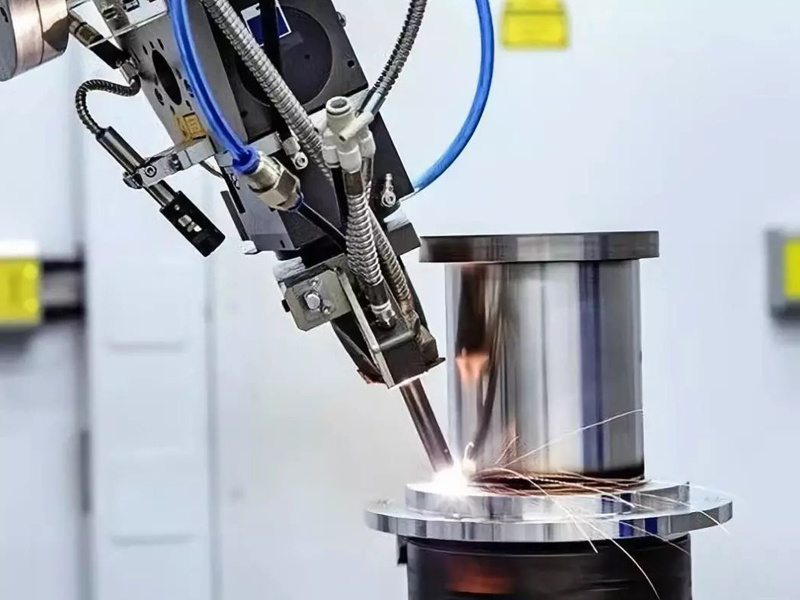What is the principle of laser cladding equipment? How to maintain it?
Laser cladding equipment Also known as a laser cladding machine, it is a new type of surface modification technology. By adding cladding material to the surface of the substrate and fusing it with a thin layer of the substrate surface using a high-energy density laser beam, an additive cladding layer metallurgically bonded to the substrate surface is formed.

Laser cladding equipment The repair technology is under the condition of numerical control movement, through the laser processing system, using the high-power density laser beam to form a thin micro-melting layer at a specified location on the surface of the substrate, so that it is evenly spread in a molten state on the surface of the part and reaches the predetermined thickness, forming a good metallurgical bond with the micro-melting substrate metal material. Moreover, there is only a small degree of dilution between them. In the subsequent rapid solidification process, a functional coating layer with predetermined special properties and completely different from the substrate is formed on the surface of the part, which can completely change the surface properties of the material, so that the surface of inexpensive materials can obtain extremely high wear resistance, corrosion resistance, high temperature resistance and other properties. This process can repair surface holes and cracks of the material, restore the geometric dimensions and performance of worn parts.
Characteristics of laser cladding machine (for workpiece repair):
1. Fast cooling speed, belonging to the rapid solidification process, it is easy to obtain fine crystal structure or generate new phases that cannot be obtained in the equilibrium state, such as unstable phases and amorphous phases.
2. The coating dilution rate is less than 5%, the coating and the substrate are firmly metallurgically bonded or interface diffusion bonded, and a good cladding layer with controllable coating composition and dilution rate is obtained.
3. High-power density rapid cladding, small heat input, small heat affected zone, small deformation, can be reduced to the assembly tolerance of parts.
4. There is almost no limitation on powder selection, and high-melting-point alloys can be deposited on the surface of low-melting-point metals.
5. The cladding layer has a wide range of thickness and hardness, and can be used for cladding layers with a thickness of less than 20 mm and a hardness of 18-60HRC;
7. The process is controlled by numerical control, and the beam aiming can cladding areas that are difficult to reach, automated operation, convenient and flexible, and strong controllability;
Laser cladding machine Selection: CO2 laser, solid-state laser, fiber laser. Customers will choose different lasers according to different materials. Regardless of the type of laser used, the power, spot diameter, and cladding speed of the laser are very important. In order to ensure the light output of the guide plate laser cladding machine, the user will use an external water cooling system to cool it.
Ensuring the light output of the water-cooled system fiber guide plate laser cladding machine is not foolproof. Maintaining the chiller and ensuring stable refrigeration is also crucial. So how can we better maintain the cooler of the guide plate laser cladding machine?
1. Ensure that the operating environment of the laser cladding machine's chiller is below 40℃.
2. Regularly replace the cooling water of the circulating chiller (every three months). The circulating water needs clean distilled water and pure water.
3. Regularly disassemble Laser cladding machine Clean the dust net of the water cooler and clean the dust of the condenser.
Related Information
RELATED INFORMATION
2022-08-26 10:09
2022-08-16 15:13
2022-08-08 10:10
Leave a message
MESSAGE CONSULTATION









